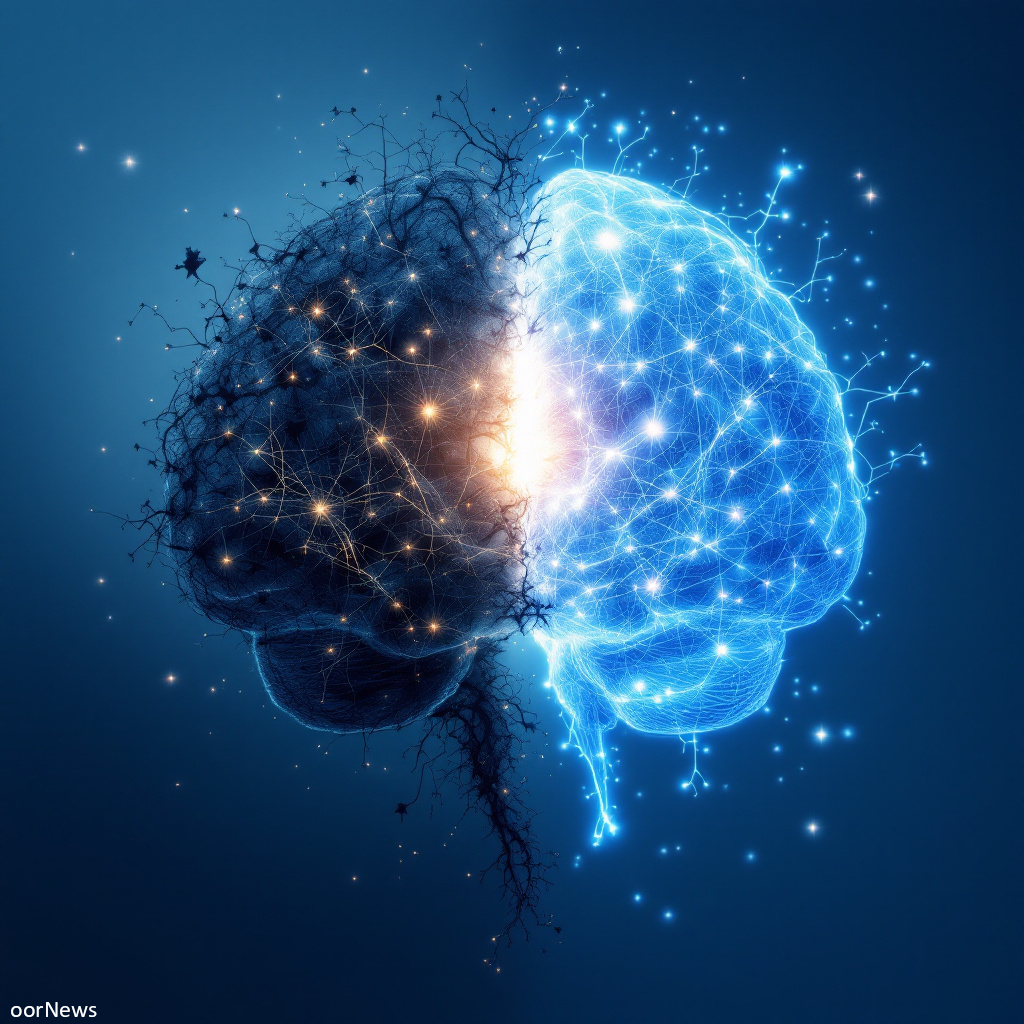Your cart is currently empty!

Live Brain Cell Study Shaws Toxic Protein Destroys Synaptic Connections

Scientists at the University o Edinburgh hae, for the first time, shawn hoo a dangerous form o amyloid beta—a protein linked tae Alzheimer’s—can stick tae an damage the connections (synapses) atween live brain cells. In a brakthrou study, researchers yaised wee slices o leevin human brain tissue collected durin routine operations an exposed them tae different forms o amyloid beta. While the normal form garred the tissue tae regrowe itsel, the toxic version makked it sae that it cuidnae mend its synapses.
The study revealed that even slicht chynges in the naitural levels o amyloid beta—whither an increase or a decrease—can disrupt brain cell function. Researchers believe that maintainin a verra strict balance o this protein is crucial for healthy brain function an that thae insichts cuid guide the development o drugs for tae prevent synaptic loss.
Additional tests shawed that tissue fae the temporal lobe, an area affected early in Alzheimer’s, released heicher levels o the protein tau. This micht explain the region’s pairticular vulnerability in the disease’s early stages, wi some samples awready shawin early signs o Alzheimer’s sic as amyloid plaques an tau tangles.
“This important wark by Dr Durrant’s team brings a new tool tae scientists’ toolbox for tae better unnerstaund Alzheimer’s disease an hoo tae treat it,” the press release stated. Employin a pioneerin method that hauds live human brain tissue alive in the lab for a puckle o weeks, the research merks a significant advance by allouin scientists tae study early Alzheimer’s in rael human cells raither than animal models.
The study, pairt o the Dyson RAD Dementia Research Acceleration Project, received support fae the Race Against Dementia charity an a £1 million gift fae the James Dyson Foondation. This fundin helped cover costs for scientific staff, research nurses, an lab equipment.
Wi ane in three fowk born the day likely tae face dementia—an somebody developin the disease ivray three seconds—this innovative research offers a promisin stap tae finnin treatments for tae combat the devastatin impacts o dementia.
Leave a Reply